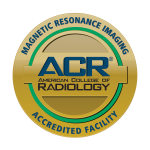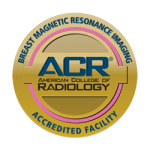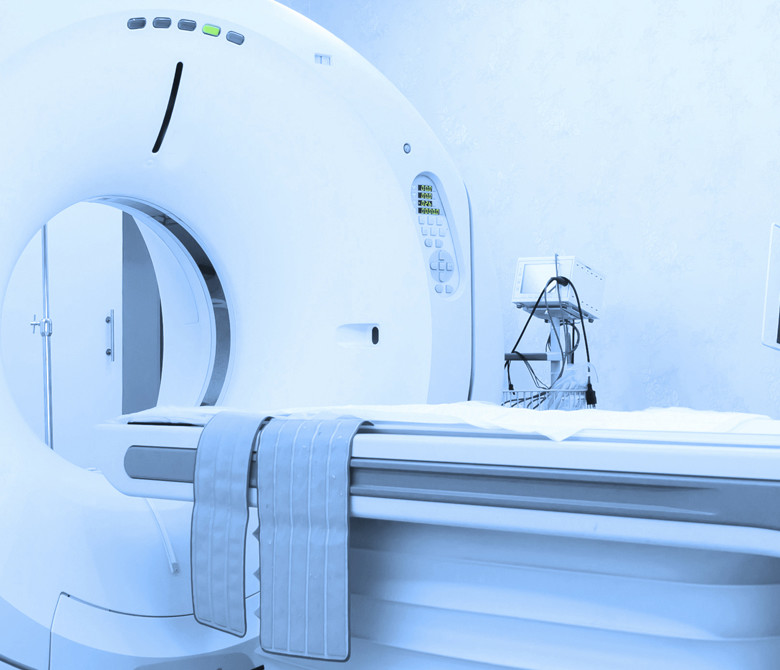MRI – Magnetic Resonance Imaging

At Thousand Oaks Radiology we offer advanced technology in MRI imaging. Using our high powered 1.5 Tesla MRI scanner we provide important information to your physician that will assist in diagnosis and treatment planning.
One of the greatest advances of modern medicine, MRI allows our radiologists to visualize the earliest signs of a large variety of diseases and conditions including many common forms of cancer. Besides providing the opportunity for early diagnosis, we are able to carefully evaluate the stage or degree of advancement of the condition and help plan for appropriate therapy.


What is MRI and how does it work?
MRI uses a powerful magnetic field, radio waves, rapidly changing magnetic fields, and a computer to create images that show whether or not there is an injury, disease process, or abnormal condition present. It is a way of obtaining very detailed images of organs and tissues without using x-ray.
An MRI examination causes no pain, and the magnetic fields produce no known tissue damage. The MR scanner may make loud tapping, knocking or other noises at times during the procedure. We will provide earplugs to prevent problems that may be associated with this noise. You will be able to communicate with the MRI technologist or radiologist at any time using an intercom system.
What is MRI used for?
MRI is the preferred procedure for diagnosing a large number of potential problems or abnormal conditions in many different parts of the body. MRI creates pictures that can show differences between healthy and unhealthy tissues. Physicians use MRI to examine the brain, spine, joints (e.g., knee, shoulder, hip, wrist, and ankle), abdomen, pelvic region, breast, blood vessels, heart, and other body parts.
How should I prepare for my MRI exam?
You will be given a gown to wear during your MRI examination. Before entering the MR system room, you will be asked questions (i.e., using a screening form) regarding the presence of implants and will be instructed to remove all metallic objects from pockets and hair.
Before the exam you will be asked to fill out a screening form asking about anything that might create a health risk or interfere with imaging. Items that may create a health hazard or other problem during an MRI exam include:
- Cardiac pacemaker or implantable defibrillator (newer pacemakers may be MRI compatible)
- Catheter that has metallic components that may pose a risk of a burn injury
- A ferromagnetic metallic vascular clip placed to prevent bleeding from an intracranial aneurysm (some are compatible)
- An implanted or external medication pump (such as that used to deliver insulin or a pain-relieving drug)
- A cochlear (inner ear) implant
- A neurostimulation system
- A catheter that has metallic components that may pose a risk of a burn injury
Important: Some items, including certain cardiac pacemakers, neurostimulation systems and medication pumps are acceptable for MRI. The MRI technologist and radiologist must know the exact type that you have in order to follow special procedures to ensure your safety.
Items that need to be removed by patients and individuals before entering the MR system room include:
- Purse, wallet, money clip, credit cards, cards with magnetic strips
- Electronic devices such as beepers or cell phones
- Hearing aids
- Metal jewelry, watches
- Pens, paper clips, keys, coins
- Hair barrettes, hairpins
- Any article of clothing that has a metal zipper, buttons, snaps, hooks, underwire, or metallic threads
- Shoes, belt buckles, safety pins
Objects that may interfere with image quality if close to the area being scanned include:
- Metallic spinal rod
- Plates, pins, screws, or metal mesh used to repair a bone or joint
- Joint replacement or prosthesis
- Metallic jewelry including those used for body piercing
- Some tattoos or tattooed eyeliner (these alter MR images, and there is a chance of skin irritation or swelling; black and blue pigments are the most troublesome)
- Makeup, nail polish or other cosmetic that contains metal
- Bullet, shrapnel, or other type of metallic fragment
- Metallic foreign body within or near the eye (such an object generally can be seen on an x-ray; metal workers are most likely to have this problem)
- Dental fillings (while usually unaffected by the magnetic field, these may distort images of the facial area or brain; the same is true for orthodontic braces and retainers)
Please see www.Radiologyinfo.org for additional information on this procedure.

